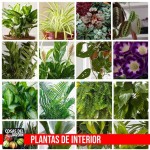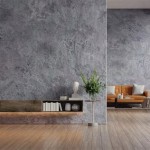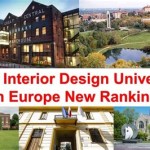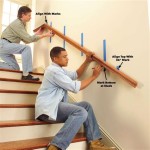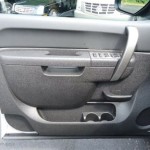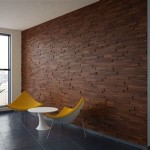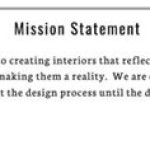Modern Cafe Interior Design Ideas
The modern cafe is more than just a place to grab a quick coffee; it is a social hub, a workspace, and an extension of the community it serves. As such, its interior design plays a crucial role in attracting and retaining customers. Modern cafe interior design is characterized by clean lines, functional spaces, and an emphasis on creating a welcoming and comfortable atmosphere. This article explores several key elements and ideas for creating a compelling modern cafe interior.
Embracing Minimalism and Functionality
Minimalism, as a design philosophy, prioritizes simplicity and functionality. In a modern cafe, this translates to decluttered spaces, neutral color palettes, and carefully selected furniture. The goal is to create an environment that is both aesthetically pleasing and highly practical for staff and customers alike.
Key aspects of minimalist cafe design include:
Neutral Color Palettes: Whites, grays, and beiges are frequently used as base colors, allowing for pops of color through artwork, plants, or furniture accents. These neutral tones create a sense of calm and openness, making the space feel larger and more inviting.
Simple Furniture: Furniture should be functional and comfortable, without being overly ornate. Clean-lined chairs, tables, and benches are preferred. Consider using a mix of seating options, such as communal tables, individual chairs, and cozy armchairs, to cater to different customer needs.
Strategic Lighting: Natural light should be maximized wherever possible. Large windows and skylights can significantly enhance the ambiance of the cafe. Supplement natural light with strategically placed artificial lighting, such as pendant lights, recessed lighting, and task lighting, to create a warm and inviting atmosphere. Avoid harsh fluorescent lighting, which can detract from the overall ambiance.
Decluttered Spaces: Keep surfaces clear and organized. Minimize decorative items and focus on essential elements that add visual interest without creating clutter. Consider incorporating storage solutions, such as built-in shelving or cabinets, to keep supplies and equipment out of sight.
Durable Materials: Choose durable and easy-to-clean materials for flooring, countertops, and furniture. Concrete, wood, and metal are popular choices for their durability and aesthetic appeal. Consider using stain-resistant fabrics for upholstery to minimize maintenance.
Functionality extends beyond the aesthetic aspects and applies to the layout of the cafe. Consider the flow of traffic, the placement of the counter, and the accessibility of power outlets. A well-designed layout can improve efficiency and enhance the customer experience.
Incorporating Natural Elements and Biophilic Design
Biophilic design focuses on incorporating natural elements into the built environment to create a connection with nature. Studies have shown that exposure to nature can reduce stress, improve mood, and enhance productivity. Incorporating natural elements into a modern cafe can create a more relaxing and inviting atmosphere.
Strategies for incorporating natural elements include:
Indoor Plants: Plants are a simple and effective way to bring nature indoors. Use a variety of plants, such as ferns, succulents, and air plants, to add visual interest and texture to the space. Consider using vertical gardens or hanging planters to maximize space.
Natural Light: As mentioned earlier, maximizing natural light is crucial. Consider using sheer curtains or blinds to diffuse light and create a softer ambiance.
Natural Materials: Use natural materials such as wood, stone, and bamboo to create a connection with nature. Consider using reclaimed wood for furniture or wall cladding to add character and sustainability to the design.
Water Features: A small water feature, such as a fountain or a wall-mounted waterfall, can add a sense of tranquility to the space. The sound of running water can be calming and soothing.
Natural Color Palette: Incorporate natural colors such as greens, browns, and blues into the color palette. These colors evoke a sense of nature and can create a more relaxing and inviting atmosphere.
Views of Nature: If possible, design the cafe to offer views of nature, such as trees, gardens, or parks. This can significantly enhance the customer experience and create a sense of connection with the outdoors.
By incorporating biophilic design principles, the cafe can become a sanctuary for customers seeking a break from the stresses of urban life.
Creating Zones for Different Activities
A modern cafe serves multiple purposes, from a quick coffee stop to a co-working space. Designing the interior with distinct zones for different activities can enhance the functionality and appeal of the cafe.
Common zones to consider include:
Quick Service Area: This zone should be located near the entrance and designed for customers who are grabbing a quick coffee or pastry. High tables and stools can provide a convenient spot for a short break.
Social Area: This zone should be designed for groups of friends or colleagues who want to socialize and linger. Comfortable seating arrangements, such as couches, armchairs, and communal tables, can encourage interaction.
Work Area: This zone should be designed for customers who need a quiet space to work or study. Individual tables, comfortable chairs, and ample power outlets are essential. Consider providing soundproofing or noise-canceling headphones to minimize distractions.
Relaxation Area: This zone should be designed for customers who want to relax and unwind. Comfortable armchairs, soft lighting, and calming decor can create a peaceful atmosphere. Consider providing a small library or a selection of magazines.
Outdoor Seating Area: If space permits, an outdoor seating area can be a valuable asset, especially during warmer months. Provide comfortable seating, shade, and heating to create a pleasant outdoor environment.
Defining these zones can be done through the strategic placement of furniture, changes in flooring or wall color, or the use of partitions. For example, a work area could be separated from the social area by a bookshelf or a screen. The key is to create distinct spaces without making the cafe feel fragmented.
In addition to physical zones, consider incorporating acoustic elements to manage noise levels. Soft surfaces, such as carpets, curtains, and upholstered furniture, can absorb sound and reduce reverberation. Soundproofing materials can be used to create quieter areas for work or relaxation.
By carefully considering the needs of different customers and creating distinct zones, a modern cafe can cater to a wider audience and become a more versatile and appealing destination.
The design of a modern cafe also relies heavily on the selection and implementation of lighting. Beyond the necessity of providing functional illumination, lighting plays a crucial role in setting the mood and highlighting specific design elements. Layered lighting schemes, incorporating ambient, task, and accent lighting, are frequently employed. Ambient lighting establishes the overall brightness and atmosphere, task lighting provides focused illumination for reading or working, and accent lighting draws attention to architectural features or artwork. The strategic use of dimmers allows for adjusting the lighting levels throughout the day to create the desired ambiance.
Furthermore, modern cafe interiors increasingly prioritize sustainability. This involves selecting eco-friendly materials, such as reclaimed wood, bamboo, or recycled content, and implementing energy-efficient lighting and appliances. Natural ventilation and daylighting are maximized to reduce reliance on artificial systems. Sustainable practices not only minimize the environmental impact but also resonate with environmentally conscious customers.
Art and decor also contribute significantly to the overall aesthetic of a modern cafe. Artwork should be carefully selected to complement the design style and create a visually stimulating environment. Local artists can be featured to support the community and add unique character to the space. Decorative elements, such as plants, sculptures, or vintage finds, can add personality and create a sense of charm. However, it is important to avoid clutter and maintain a clean and uncluttered aesthetic.
The integration of technology is another key aspect of modern cafe design. Providing reliable Wi-Fi is essential for customers who want to work or browse the internet. Power outlets should be readily accessible at all seating areas. Digital menu boards can be used to display specials and promotions. Some cafes even incorporate interactive elements, such as touch-screen kiosks or charging stations, to enhance the customer experience.
Seating arrangements are a crucial consideration in modern cafe design. A variety of seating options should be provided to cater to different needs and preferences. Communal tables encourage interaction and are ideal for groups. Individual tables provide a more intimate setting for couples or solo diners. Comfortable armchairs and sofas create a relaxed and inviting atmosphere. Bar seating offers a casual option for quick coffee or drinks. The layout of the seating should be carefully planned to maximize space and create a comfortable flow.
Finally, branding plays a vital role in modern cafe design. The interior should reflect the cafe's brand identity and create a consistent experience for customers. The color palette, logo, and typography should be incorporated into the design. The overall atmosphere of the cafe should align with the brand's values and target audience. A well-branded cafe will be memorable and attract loyal customers.

Cafe Interior Design Ideas Low Cost Restaurant Decor Foodiv

Gallery Of Bao Mochi Interior Design

Coffee Interior Design Ideas To Brighten Your Space Industville

Industrial Style Coffee Interior Design

Cafe Interior Design Ideas 2024 C Plus

7 Aesthetic Cafe Design Ideas To Fascinate Your Customer

7 Coffee Interior Design Ideas Cafe

Contemporary Cafe Design In Raine Flaunts Wooden Ceiling Beams

Café Interior Design Ideas To Enhance Your Coffee

Graffiti Cafe Interior Decorating Interiorzine
Related Posts

